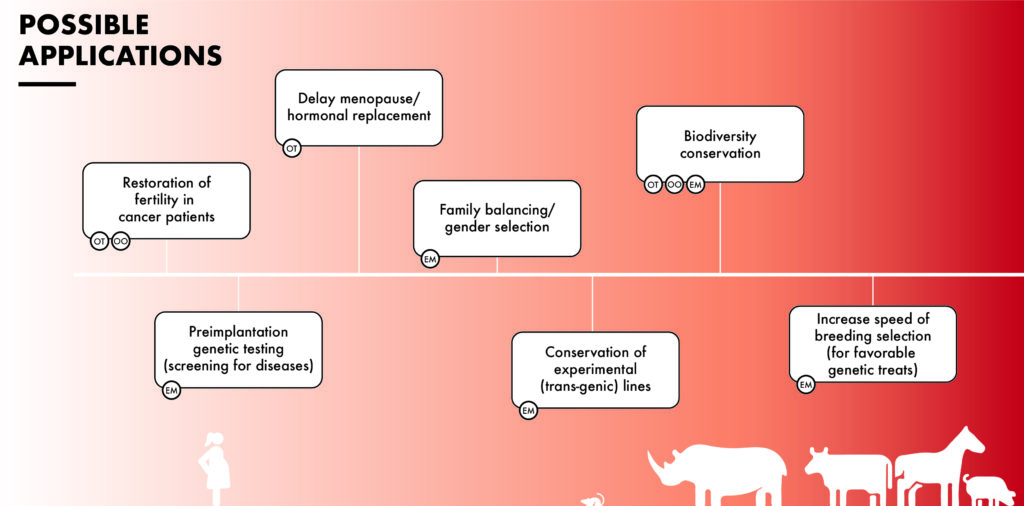Formerly known as Preservation of Female Reproductive Health

Team members Marta de Ruijter-Villani (UU), Julie Lamy (WUR), Marieke Hollestelle (UMCU), Koen Kramer (UU), Alessia Longoni (UMCU), and Efrat Gommeh (independent). Photo taken at the team’s kick-off meeting in January 2025.
Cryopreservation
Imagine a technology that preserves the essentials for creating life— it freezes and revives the building blocks of reproduction: sperm cells, oocyte, embryos, and even ovarian tissue. This is cryopreservation, a biotechnology with implications for both humans and animals. It can offer hope to women facing infertility, it can protect endangered species, and it can store genetic material for future research or potentially space colonization. Yet, while the science advances rapidly, the ethical and societal acceptability of these applications are in need of further exploration.

Our team, formed through CUCo’s Spark granting scheme, is a transdisciplinary group of experts in cryobiology, embryology, bioengineering, ethics, sociology, and design. Through the Spark collaboration, we created a common interest in cryopreservation. We are especially interested in the ethical and societal dimensions of cryopreservation and aim to contribute to its responsible use and governance.
Art-based approach
To spark meaningful conversations, we are using an art-based approach. Art has the unique ability to translate complex ideas into emotional, visceral experiences, encouraging moral reflection and fresh perspectives.
2025 mid-term update
Since the start of this year, our team has been joined by interdisciplinary designer Bertrand Burgers. He is working with us to create an experience that introduces people to the technology of cryopreservation while also inviting them to engage in emotional and moral reflection through an art installation.
We greatly value working with Bertrand, as his perspective encourages us to reflect on overlapping ideas and questions. For instance: concerning cryopreservation, what is it that we are truly preserving? Is it another way of seeking control over life itself? Who bears the costs of preservation? How is this technology shaping our morality? Could it be a way of avoiding difficult emotions, such as confronting loss? And why do we treat the genetic material of animals so differently from that of humans?
We believe these questions call for a broader societal conversation about cryopreservation. Currently, our team is shaping the concept for the installation. Together with Bertrand, we are exploring different formats that highlight key aspects of the technology as well as its ethical and societal challenges. Our goal is to strike the right balance: providing enough information to inform visitors without overwhelming them, and evoking intuitions and emotions without directing them too strongly. This is an exciting phase for our project, and once it is complete, we will move on to building a prototype.

Image credit: Flatland agency